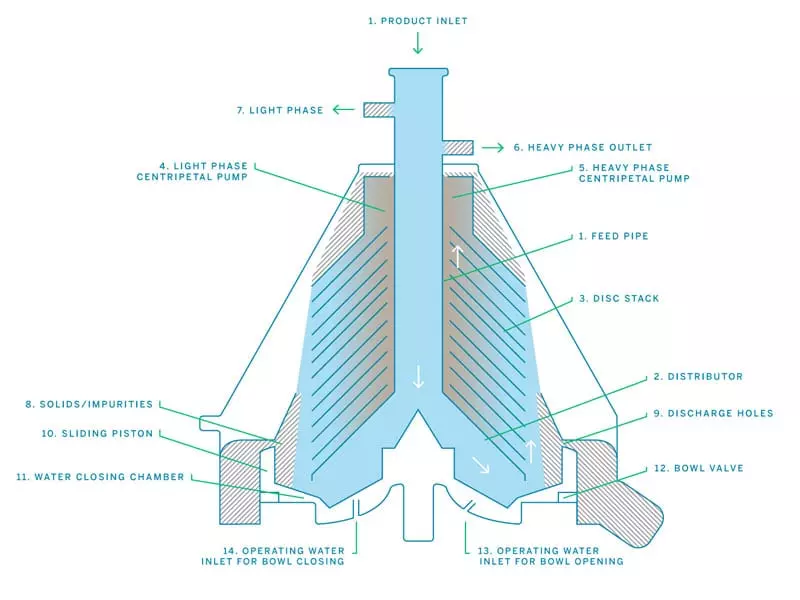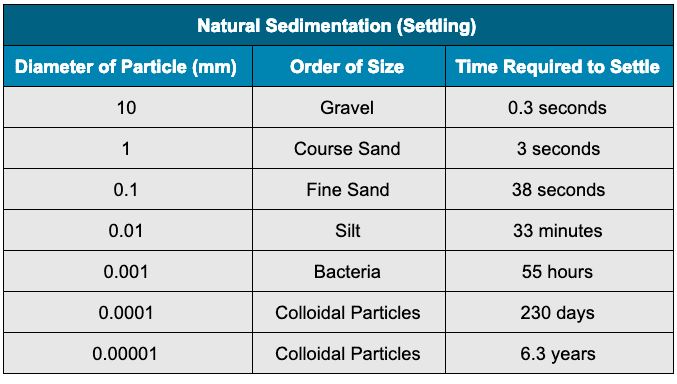
What is Centrifugal Filtration?


“What is Centrifugal Filtration?” Simply put, a centrifuge lets you profitably accelerate and control the natural processes of separation and sedimentation. Centrifugal filtration has applications in a remarkably broad set of industries. In machining, centrifugal filters reduce costs by increasing the working life of your tools and metalworking fluid, while also improving product quality. In food and beverage, filter centrifuges increase yield both by squeezing more product from each batch and decreasing the time it takes to finish those batches. In rendering and ethanol plants, advanced centrifugation has created whole new revenue streams.
Intro to Industrial Centrifuges
Incompatible materials—oil and water, slurry and water, cutting fluid and particles—will eventually separate over time. Centrifugal separation technology speeds up this natural process by spinning materials at high speed. This generates a force thousands of times greater than that of gravity. That force pulls fluids, particulate, and contaminants apart. By changing the centrifuge’s shape, rotating speed, bowl/rotor orientation, flow rate, and other factors, you can fine-tune how the commingled materials fed into the centrifuge behave. Industrial centrifuges are broadly broken into two categories:
A “two-phase centrifuge” separates two materials in a single step. This is usually either a liquid-liquid separation (often oil-based and water-based liquids) or solid-liquid separation. “Pusher centrifuges” and “basket centrifuges” are common two-phase solid-liquid separators. One huge benefit of solid-liquid centrifuges is that they can consistently separate particles and fluids with minimal impact on flow rate and without the need for disposable filter medium.
A “three-phase centrifuge” provides one-step solid-liquid-liquid separation. That usually means separating oil-based and water-based fluids while ejecting particles (all in a single continuous process).
How Do Centrifugal Filters Work?
The following diagram shows one style of high-performance centrifugal technology: a CentraSep high-speed disc stack centrifuge. These centrifugal filters can perform either two-phase or three-phase separation. Let’s walk through a typical three-phase (liquid-liquid-solid) centrifugal separation.

This separator has a high-speed spinning rotor (the cone-shaped outer wall) that provides the centrifugal force that drives the separation process. A feed pipe (1) brings commingled water/oil/particulate into the distributor (2), where it is accelerated until it reaches the rotor’s current rotating speed. That product then flows into the “disc stack” (3). This is a series of thin conical discs stacked within the rotor. This internal configuration dramatically increases the unit’s separation efficiency and allows it to perform multi-phase separations in a single step. In water-based coolant applications, the disc stack channels the “light phase” (usually tramp oil) toward the center of the rotor. At the same time, the clean coolant (or “heavy phase”) flows toward the outside of the rotor. Now that these liquids are separated, the light and heavy phases can be routed to their respective outlet ports (6 and 7).
Meanwhile, the solid materials and fine particles (9) collect on the underside of the discs and are forced to the outer edge of the rotor (8). Solid materials collect at the bottom of the centrifuge, where they are periodically automatically discharged.
How Do Centrifugal Filters Work?
We’ve all seen that bottle of Italian dressing left sitting on the table: Oil, water, and vinegar each form their own layers. The solids are drawn together and either float to the top or settle at the bottom. Sedimentation and separation are facts of life. Given enough time, gravity will always separate mixtures by density, forming layers of fluids and solids. But, as you can see in this chart, letting nature take its course is slow work:

Fine sand or silt will settle out of suspension in under an hour. Separating colloidal solutions like milk can take months, even years. Centrifugation doesn’t just accelerate this process. It also gives us control over specific aspects of that separation: we can dial in the accuracy and precision, dynamically adjust to variable flow rates, and selectively route the products themselves (sending water, oil, chemicals, sludge, slurry, and solid materials into separate systems or tanks for storage, disposal, or further processing). It also makes it possible to perform tasks (like dewatering sludge and slurry) to a degree and efficiency that’s just not practical without a separator.

Client-Site Services
Committed to Service
With the largest fleet of separation technology, advanced engineering, and chemistry capability across a wide array of industries and experienced operations personnel throughout North America, you can count on us when you need us most.rn
-
- 9 Service Locations Across North America
-
- The Largest Fleet of Separation Technology
-
- Over 150 of Fluid Experience


CentraSep S-126 Maximizes Profits for Glass Fabricators
The CentraSep S-126 centrifuge is built to handle whatever the glass industry can throw at it. Its filtering capabilities are unmatched and it will operate for years with very little maintenance or attention.
Fabricators using a CentraSep S-126 are seeing rapid returns on their investment (ROI) of as little as 3 – 18 months.




